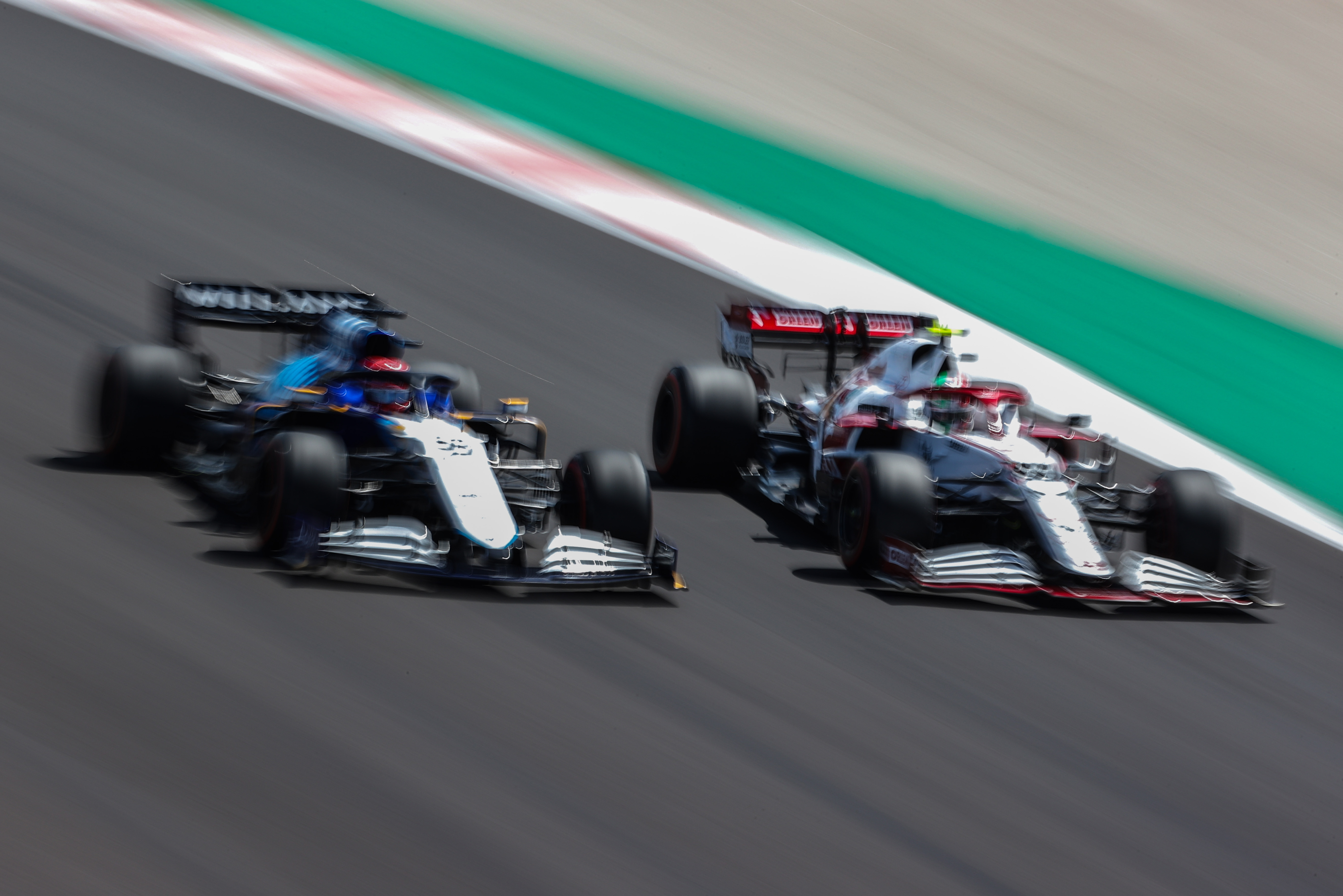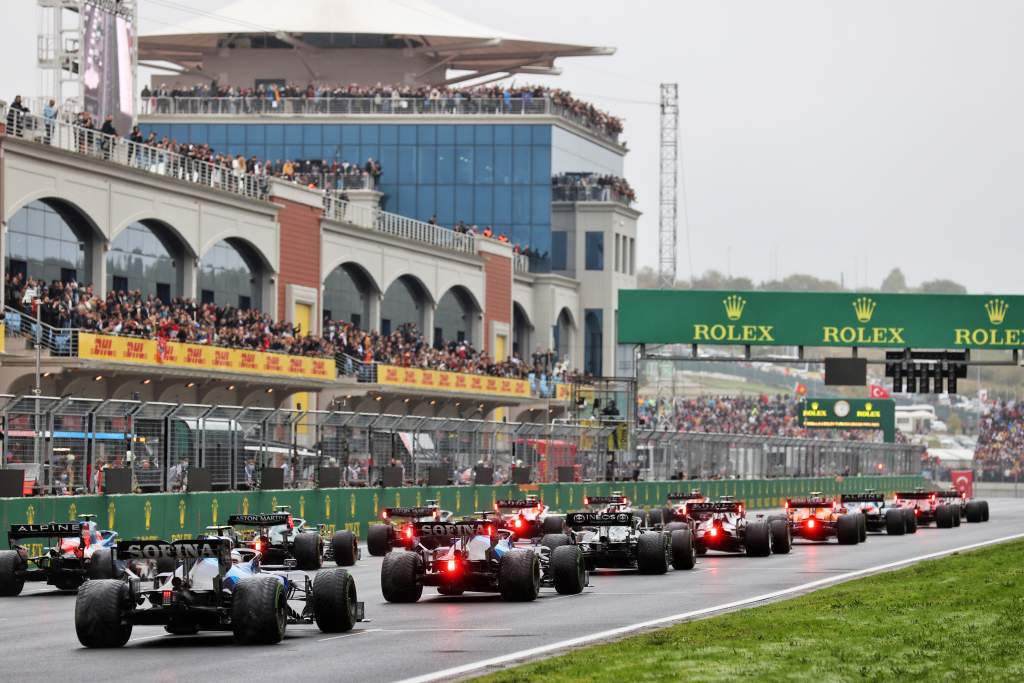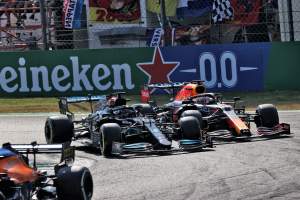Up Next

This has been one of the best Formula 1 seasons for a long time. Even with 16 races down and six to go, the world championship fight is incredibly close and there are battles throughout the field. So it’s a good time to examine the performance trends of the 10 teams for clues of what to expect in the run-in.
I wouldn’t count on it predicting what will happen given the unexpected has happened more than the expected so far this year. But it will give us a little more understanding of the underlying performance of the cars.
To look at this, I have converted each team’s fastest lap time from each weekend and converted it into a percentage of the fastest. Most are from qualifying, but as there have been a couple of wet qualifying sessions, several times are taken from an earlier practice session. Basically, it’s the fastest single lap set across the team’s drivers on a given weekend.
They are ranked in current 2021 performance order. To allow us to understand who has progressed and who hasn’t, I have included their 2020 performance figures in a second column with their ranking in brackets.
Pure performance rankings
(0% = ultimate pace)
| 2021 rank | Team | 2021 (16 races) | 2020 (17 races) | Progress |
| 1 | Mercedes | 0.136% | 0.044% (1st) | +0.092% |
| 2 | Red Bull | 0.248% | 0.669% (2nd) | -0.412% |
| 3 | McLaren | 0.816% | 1.422% (5th) | -0.606% |
| 4 | AlphaTauri | 0.866% | 1.633% (7th) | -0.767% |
| 5 | Ferrari | 0.872% | 1.405% (4th) | -0.533% |
| 6 | Alpine | 1.221% | 1.586% (6th) | -0.365% |
| 7 | Aston Martin | 1.446% | 1.256% (3rd) | +0.190% |
| 8 | Alfa Romeo | 1.766% | 2.744% (8th) | -0.978% |
| 9 | Williams | 1.915% | 2.848% (9th) | -0.933% |
| 10 | Haas | 3.234% | 3.005% (10th) | +0.229% |
| Averages | 1.252% | 1.661% | -0.409% |
From the averages for the teams’ performance spread between 2020 and 2021, we can see that it is much closer this year. We can also rank them in order of progression or regression from 2020 to 2021.
2020-2021 improvements
| 1 | Alfa Romeo | -0.978% |
| 2 | Williams | -0.933% |
| 3 | AlphaTauri | -0.767% |
| 4 | McLaren | -0.606% |
| 5 | Ferrari | -0.533% |
| 6 | Red Bull | -0.412% |
| 7 | Alpine | -0.365% |
| 8 | Mercedes | +0.092% |
| 9 | Aston Martin | +0.190% |
| 10 | Haas | +0.229% |
| Average | -0.409% |
It’s always easier to progress when you are further away from the front running pace as there is lower hanging fruit to be picked in terms of making the car quicker. But making big improvements doesn’t always make you a race winner as you have to work your way across many stepping stones.
Alfa Romeo and Williams have made the biggest strides, but only to the point where over a normal weekend they have caught up with the midfield bunch with the occasional Q3 appearance. There’s still a lot of work to do before they can regularly challenge for a podium on merit.

At the other end of the scale, Haas has admitted that it was putting this year down to driver development and focusing its efforts on the major rule changes for next year. As the limit of its development work was simply to adapt the car to the modified aero rules, Haas gives us a useful measure of the performance loss from the regulations change.
This doesn’t make good reading for Mercedes and Aston Martin. Mercedes was fastest in 2020 and is still top this year, but with a swing against it of around half-a-percent to Red Bull. Or, should I say, Lewis Hamilton has lost half-a-percent to Max Verstappen.
For Aston Martin, it has been a difficult season. To slump from the third fastest to the seventh fastest is a big blow. Yes, both of these teams run their cars with a low rake concept. But that’s not the whole story.
As mentioned, Haas has done no development for the 2021 season and, in reality, there is little difference in the relative performance between it and Mercedes and Aston Martin this year compared to last.
At face value, it looks like most teams have made progress but it isn’t only about the numbers. I always say that it’s about being the best on the day that counts. It doesn’t matter if others are slower or you are faster, it’s only your relative position on the day that matters. Mercedes has still had that advantage, even if it has been reduced dramatically.
No matter what the reasons are for the changes, I’m just happy it has brought us a much more interesting championship than it has been for the last few seasons.
I just hope the FIA and F1 haven’t thrown the baby out with the bathwater with their extreme changes for 2022.







